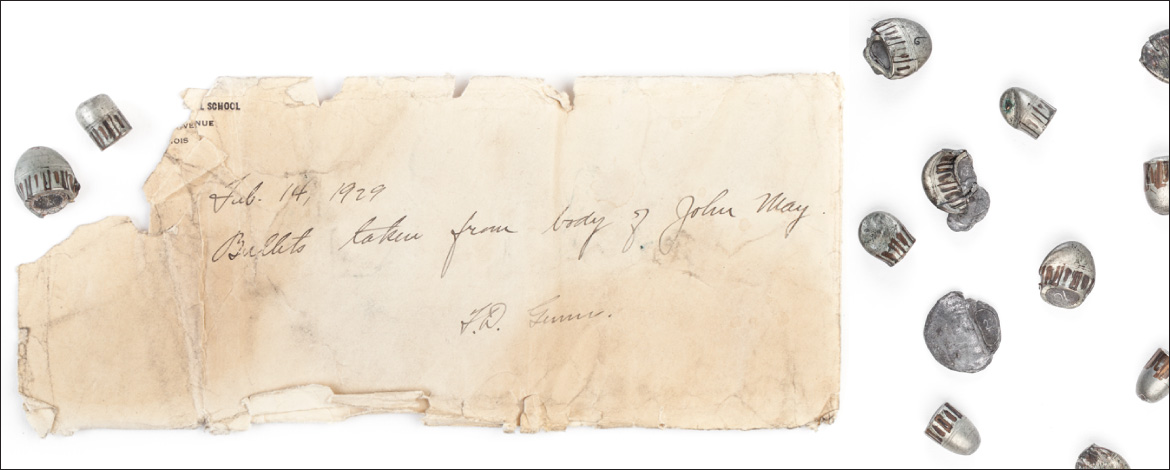Happy Valentine's Day!
"On the chilly winter morning of February 14, 1929 four men, two in police uniforms entered the SMC Cartage Company garage. Seven members of Bugs Moran's gang were lined up against a the wall and shot. The men opened fire with two Thompson submachine guns and a shotgun. All seven were shot dead. A German shepherd dog named Highball, tied to a car bumper in the garage, was not killed. Six of the men, including John May, Albert Kachellek, Adam Heyer, Albert Weinshank, Peter Gusenberg and Reinhardt H. Schwimmer, died quickly. One, Frank Gusenberg, brother of Peter, clung to life despite being shot 22 times. Gusenberg died three hours later without revealing any information about the shooting. The killers undoubtedly had hoped to kill Moran himself, but he was not among the seven victims. Moran was supposed to be there, but was late for the meeting, saw the police car and walked on by along with two associates.
The Massacre was reported across the country, and it horrified an American public that had previously viewed gangsters such as Al Capone as heroic figures. A line had been crossed, and political leaders and citizens alike demanded a crackdown.
Al Capone was suspected of being the Massacre mastermind but there was no evidence to charge him. Instead, federal authorities built a tax evasion case against him. He was convicted in 1931 and sentenced to 11 years in prison.
The Cook County coroner took a scientific approach to investigating the Massacre. He brought in Dr. Calvin Goddard, a pioneer in the new field of ballistic testing. Testing bullets and shell casings recovered from the crime scene, Goddard confirmed that two Tommy guns confiscated from a hoodlum's house in rural Michigan were used in the Massacre. He also was able to confirm that no police weapons had been used, leading investigators to believe the shooters had worn police uniforms as a disguise.
Investigators recovered shells and bullet fragments from the floor on the North Clark Street garage and organized them in the evidence envelopes. Dr. Goddard's work proved that no two revolvers and made exactly alike - that every weapon makes characteristic marks on a bullet and cartridge shell, and that they are the same every time that gun is fired."
As part of a forthcoming new exhibit, the Mob Museum contacted me to image archive the entire collection of bullets removed from the victims' bodies and the accompanying spent shell casings collected from the Clark Street garage floor. Working closely with the Museum's archivist handling the collection with bleached white cotton inspection gloves, we carefully removed the bullets from their respective evidentiary envelopes and arranged them accordingly. For some of the more noteworthy samples, I imaged them using a 100mm macro lens. During the post process work-flow I was able to see, in great detail, what Dr. Goddard saw under the microscope nearly 90 years ago. Recording at 16 bit depth with over twenty-five million pixels through a 100mm macro lens revealed stunning details.
Below: "Bullets taken from body of John May"

For further information, please visit the Mob Museum in Las Vegas, Nevada.
